Wildlife photography is a test of determination, perseverance and luck. It is not uncommon for professional wildlife photographers to camp out in the wild for hours or days to get a few worthy shots. If you are interested in wildlife photography but lack the time now to venture too far out, visit your local zoo and practise with these five tips before planning your next big photography trip.
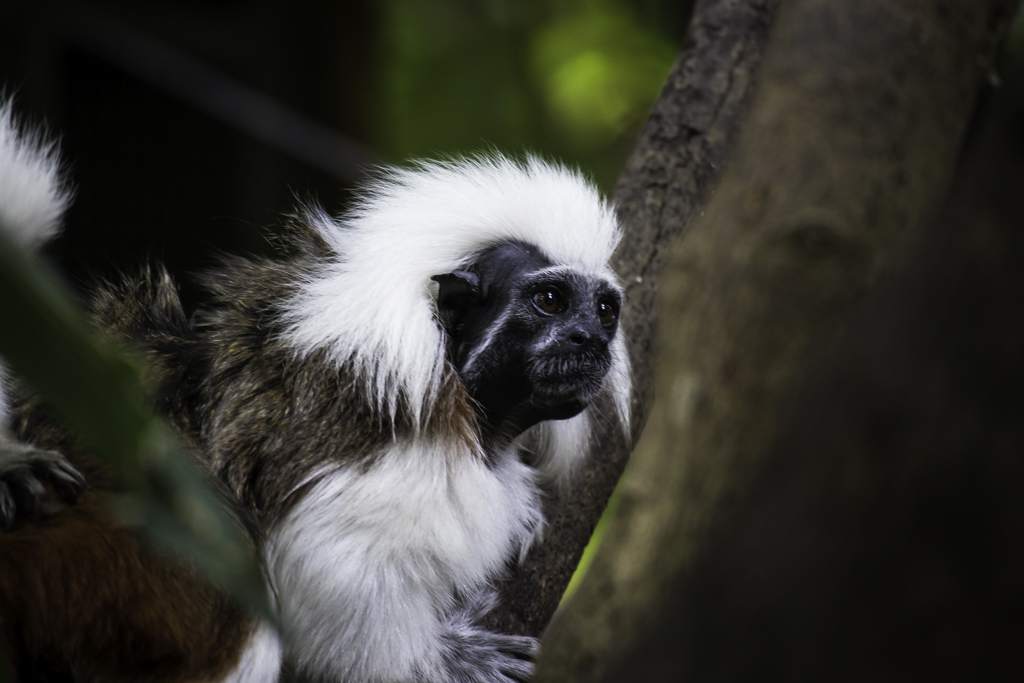
EOS M6, EF-M 55-200mm f/4.5-6.3 IS STM lens, f/6.3, 181mm, 1/25sec, ISO500
A Cotton Top Tamarin keeping a lookout on one of the tree branches
1. Framing
Framing is one of the basic rules in photography composition. Learning how to frame your subject can give context and make a dull photo more interesting and dynamic. For the shot below, we create a greenish-toned, gently blurred foreground by dangling a few loose leaves in front of the camera lens. This gives viewers an illusion that the photographer is hiding behind the bushes to take a shot of the Black-Handed Spider Monkey. Explore other ways to frame your subject in the infographic How to Frame Your Photos.
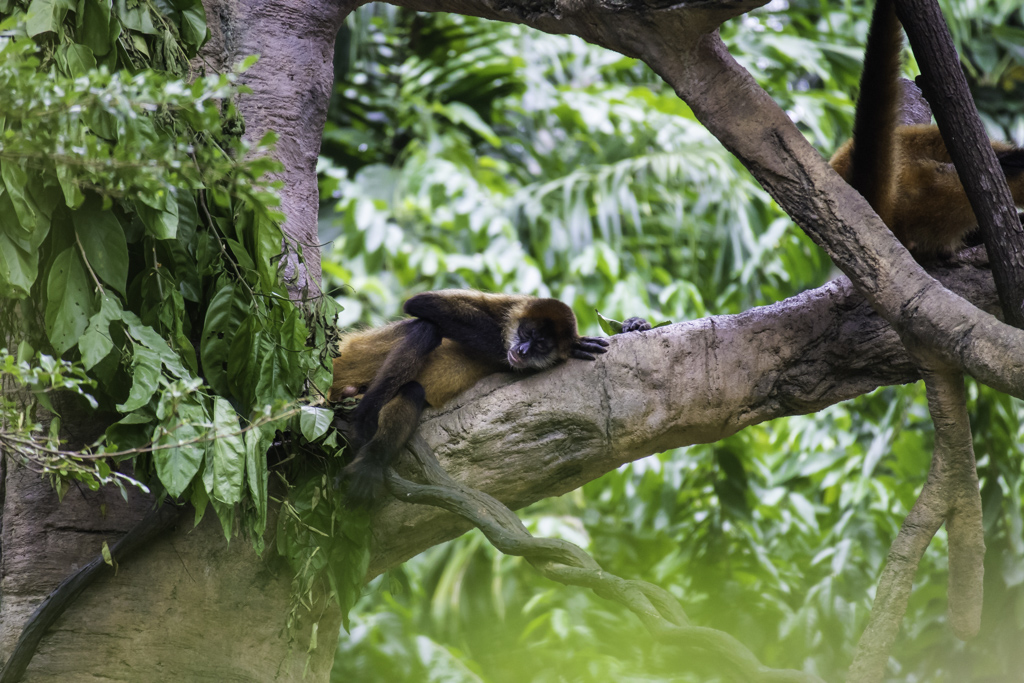
EOS M6, EF-M 55-200mm f/4.5-6.3 IS STM lens, f/6.3, 200mm, 1/250sec, ISO1250
A Black-Handed Spider Monkey having a snooze in the hot afternoon
2. Timing
Timing is everything when it comes to wildlife photography. Unlike portrait photography, the photographer cannot direct a wild animal to do his bidding. It is important to seize the moment once you see the opportunity for a good photo. Train your eyes to spot certain movements or pay attention to the animal’s behaviour so that you are ready when the action happens.

EOS M6, EF-M 55-200mm f/4.5-6.3 IS STM lens, f/6.3, 184mm, 1/1600sec, ISO1250
An Orangutan carries her baby as they swing from one spot to another
3. Angle
If the animal is resting on the ground, be sure to lower yourself to its level to get a good shot of its face. Similar to photographing a pet, the perspective changes as one gets on the same level as the subject. Try a variety of angles – top-down, straight on, low angle-up – and find the best possible ones for you. Make use of your camera’s tilting LCD monitor for angles that are difficult to manage, such as those really close to the ground or overhead.

EOS M6, EF-M 55-200mm f/4.5-6.3 IS STM lens, f/6.3, 159mm, 1/100sec, ISO1600
A sleepy kangaroo relaxing under the shade
4. Cropping
Cropping is a good way to remove any distractions in the photo. Messy fringes, foreground or background can draw the viewer’s attention away from your subject. By cropping away the fence or zoo signs, your photos become more convincing – just like a wildlife one.
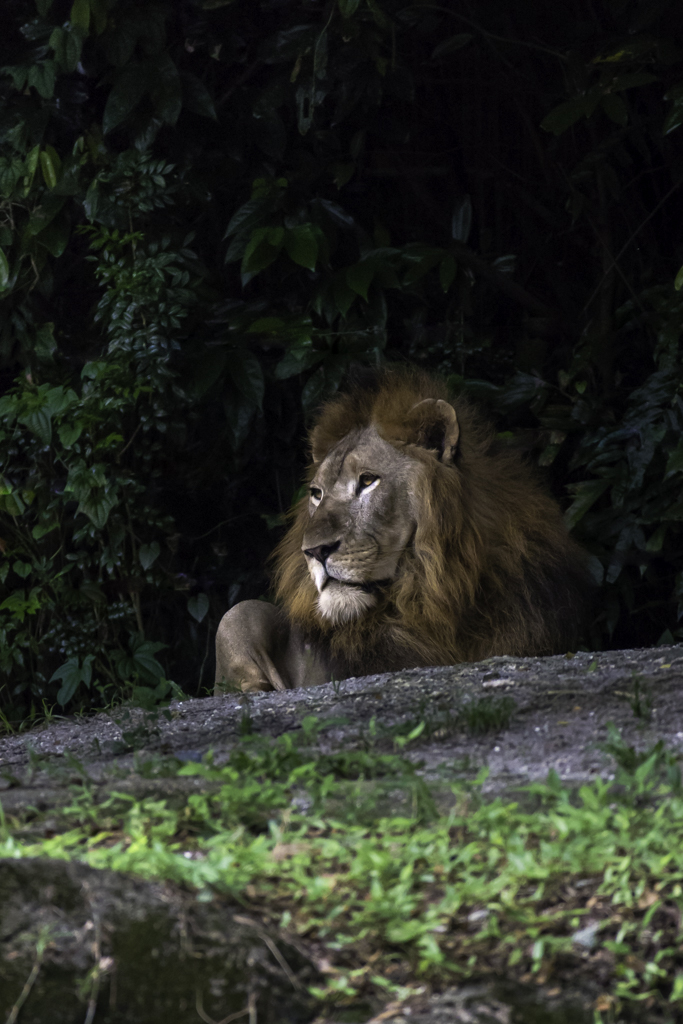
EOS M6, EF-M 55-200mm f/4.5-6.3 IS STM lens, f/6.3, 200mm, 1/1250sec, ISO1250
A male lion stares at a group of passing giraffes opposite his den
5. Equipment
Having the right camera and lenses can help you achieve the photos you want to create. The Canon EOS M6 is equipped with a 24.2-megapixel APS-C sensor (which allows you to crop generously without losing image quality), DIGIC 7 image processor and a Dual Pixel CMOS AF system for fast autofocus and quick Live View shooting, perfect for capturing fast and unpredictable movements. Find out more about the camera in 5 Key Features of the EOS M6.
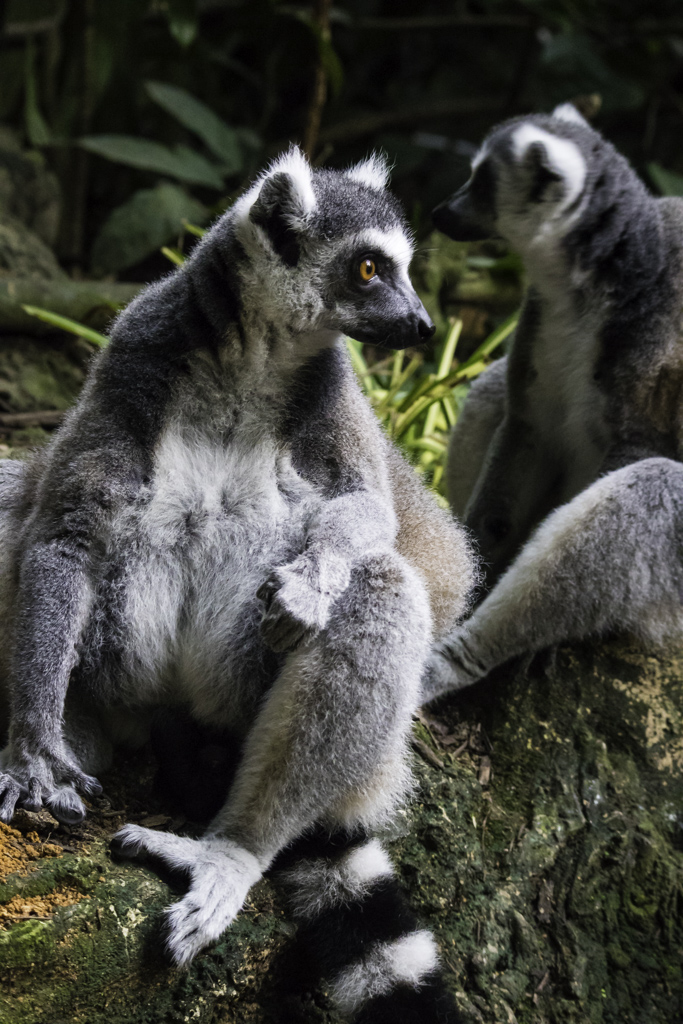
EOS M6, EF-M 55-200mm f/4.5-6.3 IS STM lens, f/6.3, 55mm, 1/50sec, ISO3200
The playful Ring-Tailed Lemur waits for an opportunity to play tag
Lenses play a huge part in photography, and for shooting wildlife, we recommend the EF-M55-200 f/4.5-6.3 IS STM lens for its compact size, while allowing you to zoom a good distance without having to go too close to your subject and still get a clear shot. This is ideal for wildlife photography because if you get too near to your subject, it may run away or in some cases, it may feel provoked and even attack you. Find out more about the EF-M55-200 f/4.5-6.3 IS STM lens in this review.
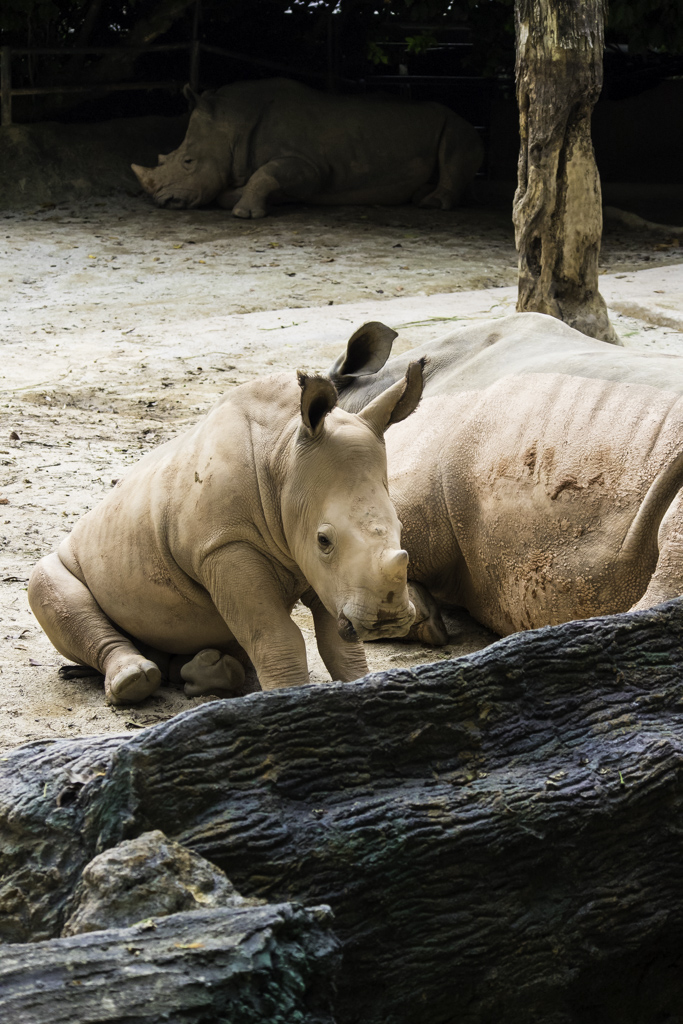
EOS M6, EF-M 55-200mm f/4.5-6.3 IS STM lens, f/6.3, 55mm, 1/1600sec, ISO1250
Shot at 55mm focal length (zero percent zoom)
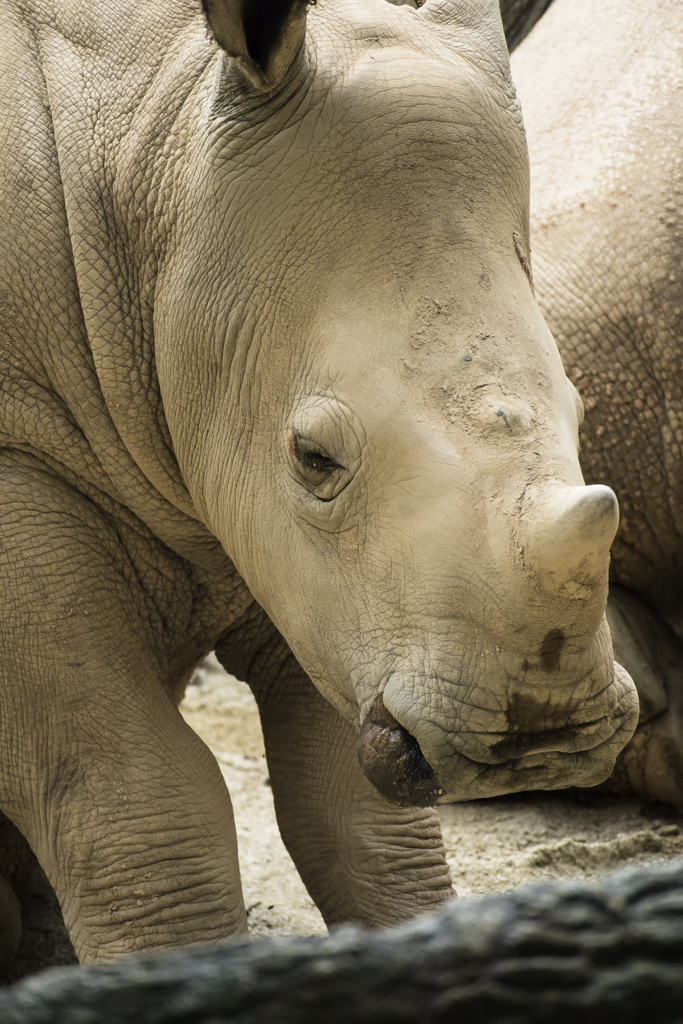
EOS M6, EF-M 55-200mm f/4.5-6.3 IS STM lens, f/6.3, 200mm, 1/1600sec, ISO1250
Shot at 200mm focal length (100 percent zoom)
Receive the latest update on photography news, tips and tricks.
Be part of the SNAPSHOT Community.
Sign Up Now!


































